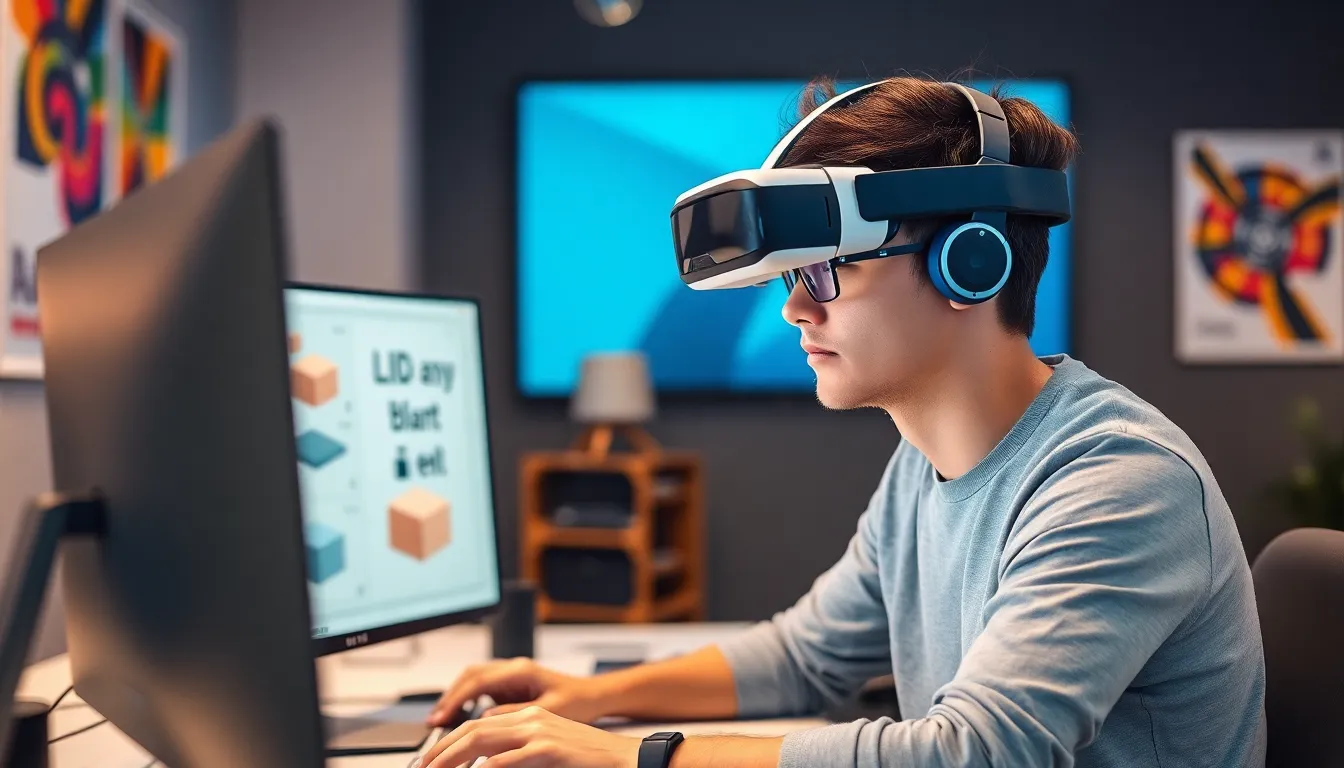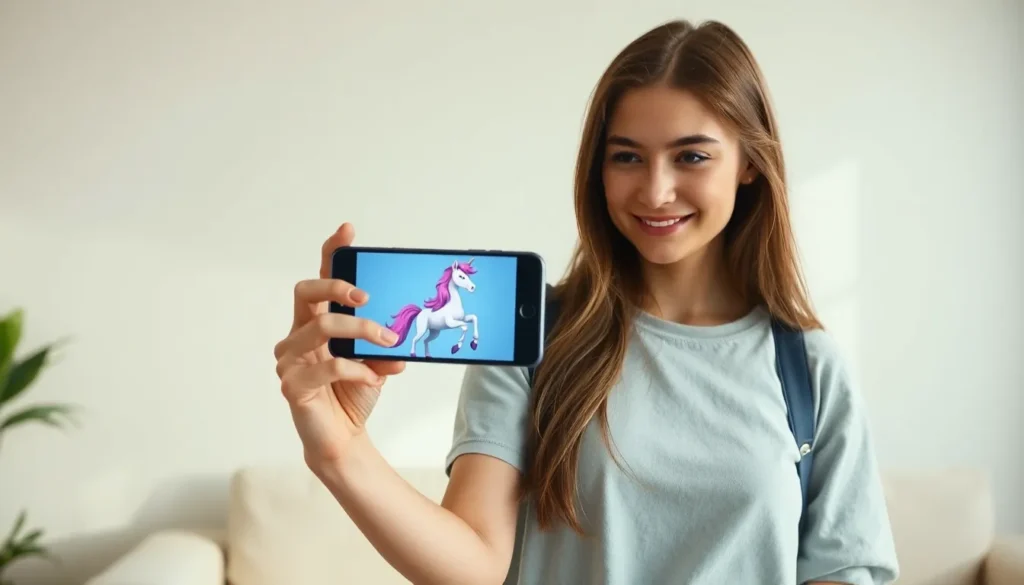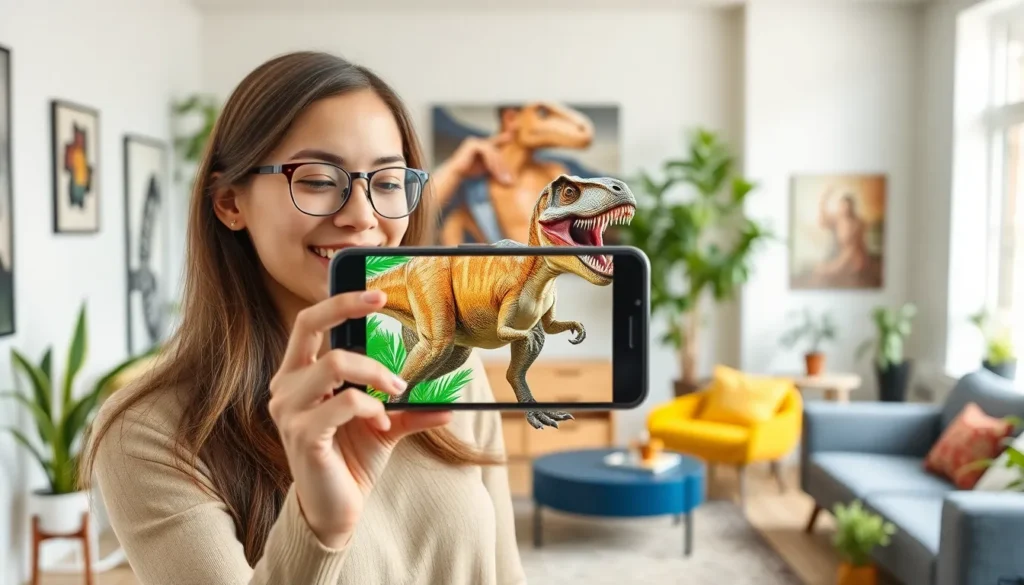In a world where reality is just a suggestion, augmented reality designers are the wizards turning the ordinary into the extraordinary. Imagine walking down the street and suddenly seeing a dinosaur casually munching on a hot dog or your coffee cup transforming into a portal to another dimension. This isn’t just sci-fi; it’s the magic of augmented reality, and these designers are the creative minds behind it all.
Augmented Reality Designer
Augmented reality (AR) design combines creativity and technology to transform everyday experiences. It enhances real-world environments with digital elements, making interactions more engaging.
Definition of Augmented Reality
Augmented reality refers to the technology that overlays digital content onto the physical world. This blending occurs through devices like smartphones, tablets, and AR glasses. Users experience enhancements such as 3D models, animations, or information display, all anchored to their environment. For instance, AR can facilitate virtual decorating by allowing users to visualize furniture within their own homes. This technology provides interaction with layers of multimedia that enrich surroundings, creating an immersive experience.
Importance of Augmented Reality Designers
Augmented reality designers play a pivotal role in shaping user experiences. Creativity drives their work, as they craft visual stories and interactions that captivate audiences. Designers bridge the gap between digital content and reality, ensuring seamless integration without disruption. Businesses leverage AR designers to develop solutions that increase engagement and brand recognition. For example, AR experiences can enhance marketing campaigns, enabling consumers to interact with products before purchase. Without skilled designers, immersive AR experiences would lack the quality that captures user attention and fosters innovation.
Skills Required for Augmented Reality Designers

Augmented reality designers need a diverse skill set to create compelling AR experiences. Mastery in both technical and soft skills plays a significant role in their success.
Technical Skills
Proficiency in 3D modeling tools such as Blender and Maya is essential for creating realistic digital assets. Understanding programming languages, like C# or JavaScript, helps in developing interactive applications. Familiarity with AR development platforms, such as Unity or Unreal Engine, enables designers to bring ideas to life effectively. Experience with graphic design software, including Adobe Photoshop and Illustrator, aids in creating visually appealing interfaces. Knowledge of user interface (UI) and user experience (UX) design principles ensures that experiences are intuitive and engaging.
Soft Skills
Creativity drives the conceptualization of innovative AR experiences. Collaboration with other team members, such as developers and marketers, improves project outcomes and enhances creativity. Problem-solving abilities enable designers to address challenges during the design process. Strong communication skills facilitate the clear expression of ideas and feedback. Adaptability to new technologies and trends in AR keeps designers relevant and competitive in a rapidly evolving landscape.
Tools and Technologies Used
Augmented reality designers utilize a range of tools and technologies to create engaging AR experiences. Here’s an overview of the key components essential for their work.
Designing Tools
Designing tools are vital for creating stunning visual content. Tools like Blender and Maya allow designers to create intricate 3D models. Both software options provide robust capabilities for animation and rendering. Adobe Creative Suite, including Photoshop and Illustrator, offers designers the ability to create and manipulate graphics effectively. Sketch and Figma serve as essential tools for UI/UX design, ensuring intuitive user interfaces. Familiarity with these tools enhances a designer’s ability to deliver captivating experiences.
Development Platforms
Development platforms play a pivotal role in bringing AR projects to life. Unity stands out as a prominent choice for AR development, offering comprehensive tools for creating immersive environments. Unreal Engine also offers advanced capabilities to build high-quality graphics and interactive applications. Vuforia and ARKit provide robust libraries for integrating AR features seamlessly into mobile apps. Both options support cross-platform functionality, making it easier to reach diverse audiences. Knowledge of these development platforms is crucial for successfully executing innovative AR projects.
Applications of Augmented Reality Design
Augmented reality design finds applications across many industries, from gaming to healthcare. Designers create immersive experiences that reshape how users interact with their environments.
Gaming and Entertainment
AR revolutionizes the gaming industry by creating interactive experiences that blend physical and digital worlds. Players engage with dynamic 3D characters and environments through devices such as smartphones and AR glasses. Pokémon GO serves as a prime example, allowing users to catch virtual creatures in real-world settings. Developers employ AR to enhance storytelling, enabling unique narratives that captivate audiences. Live events also benefit from AR elements, transforming how audiences perceive performances.
Education and Training
In education, AR provides interactive learning experiences that enhance student engagement. Students visualize complex concepts, such as human anatomy or historical events, through 3D models overlaid on their surroundings. AR applications enable practical training simulations for various fields, including engineering and medicine. Learners gain hands-on experience without the risks associated with real-world scenarios. Teachers utilize AR to create immersive lessons, fostering collaboration and creativity among students.
Healthcare
Healthcare professionals leverage AR for improved diagnostics and training. AR technology aids surgeons by overlaying critical information during procedures, enhancing precision. Medical students benefit from realistic simulations that prepare them for real-life situations. In physical therapy, AR creates exercise routines that encourage patient participation and compliance. Doctors utilize AR tools to visualize patient data, resulting in better treatment plans. Implementing AR in healthcare enhances education, training, and patient care, showcasing its transformative impact.
Career Opportunities and Growth
The field of augmented reality design offers numerous career paths for aspiring professionals. Designers can explore various job roles tailored to different industries and skill sets.
Job Roles
Positions like AR developer, UI/UX designer, and 3D artist play significant roles within AR teams. AR developers typically focus on building interactive experiences using programming languages such as C# and JavaScript. UI/UX designers prioritize user interaction, creating intuitive interfaces that enhance the overall experience. 3D artists emphasize creating realistic models and animations, bringing digital elements to life. Additional roles can include project managers, who coordinate efforts across teams, and content creators, who generate engaging narratives for applications. Each position within the AR landscape contributes uniquely to the final product, highlighting the collaborative nature of the field.
Future Trends in Augmented Reality Design
Future developments in augmented reality design showcase potential growth and innovation. Integration of artificial intelligence in AR applications can enhance personalization, tailoring experiences to individual user preferences. Advancements in hardware, such as more accessible AR glasses, promise increased user adoption. In addition, industries like retail are expected to leverage AR more extensively, allowing customers to visualize products in real-time. Collaborations between AR design and other technologies, like virtual reality, will likely produce hybrid experiences that further blur the lines between physical and digital. These evolving trends signal a vibrant future for AR designers as they explore new frontiers and opportunities.
Conclusion
The world of augmented reality design is rapidly evolving and filled with opportunities for creative minds. As AR continues to integrate into various industries the demand for skilled designers will only grow. Their ability to blend digital content with the physical world not only enhances user experiences but also drives innovation across sectors.
With a diverse skill set that includes technical expertise and creative problem-solving AR designers are poised to shape the future of interactive experiences. Embracing new technologies and trends will empower them to push boundaries and redefine how people engage with their surroundings. The journey ahead for AR designers is exciting and full of potential.



